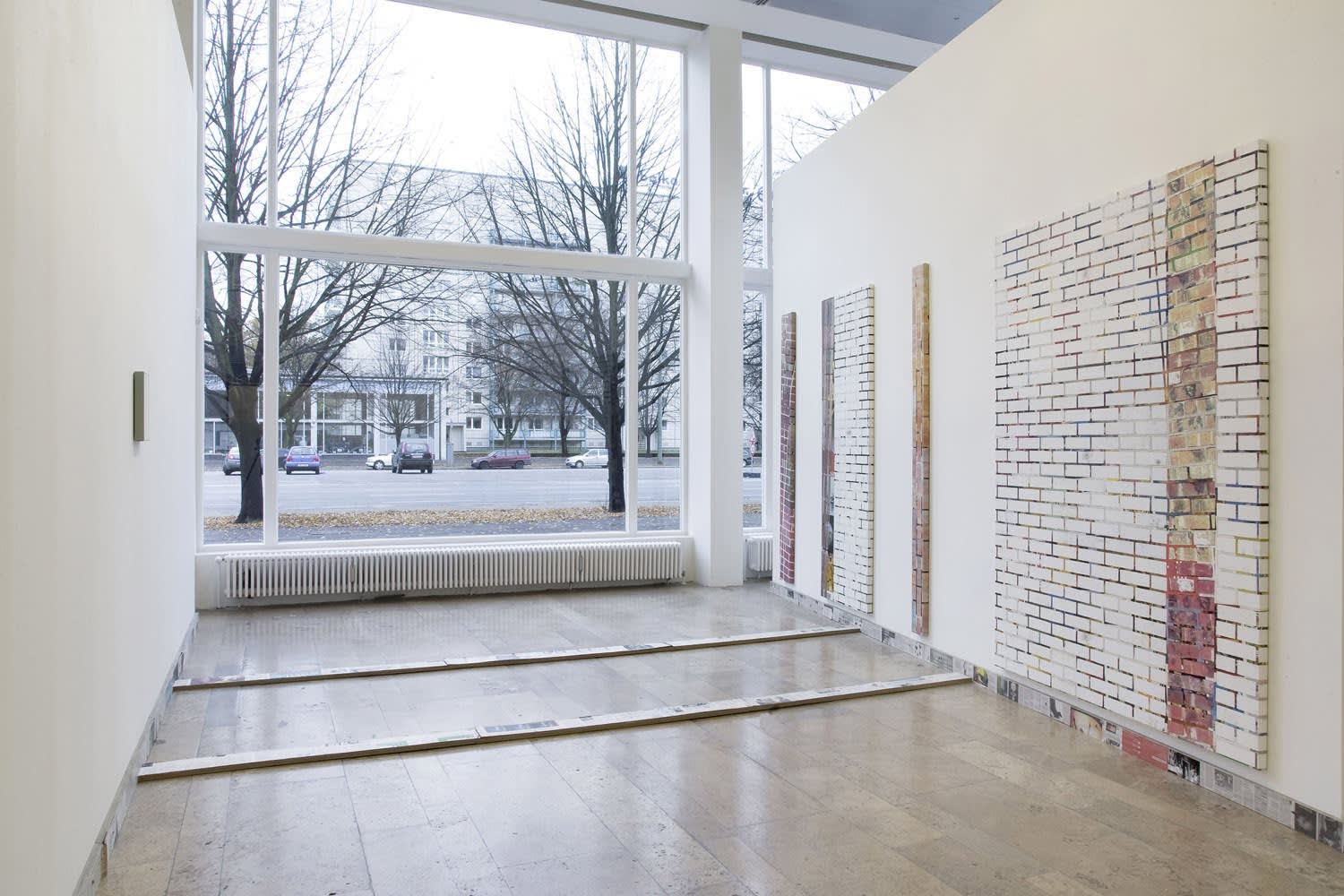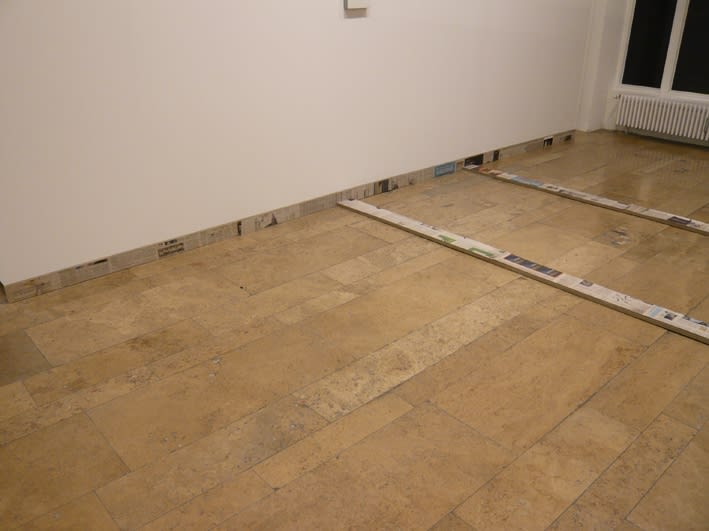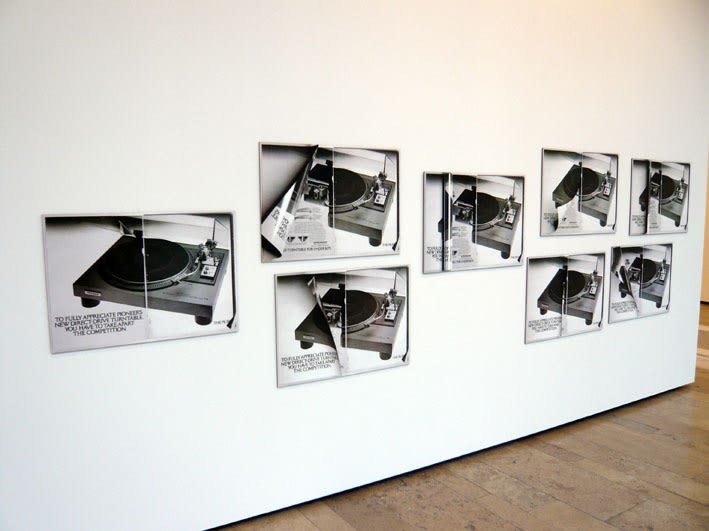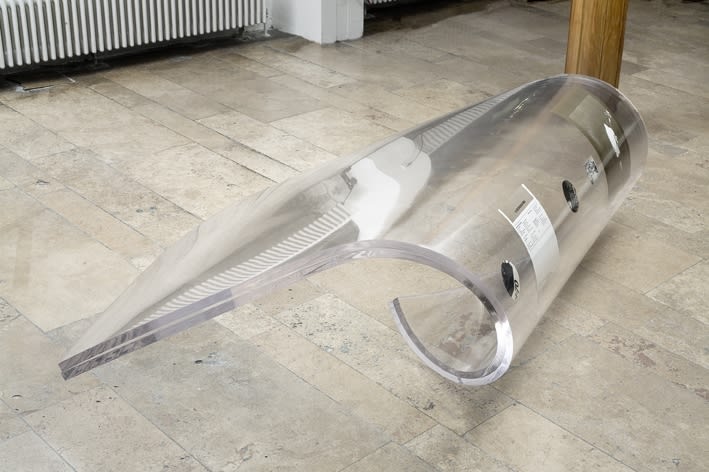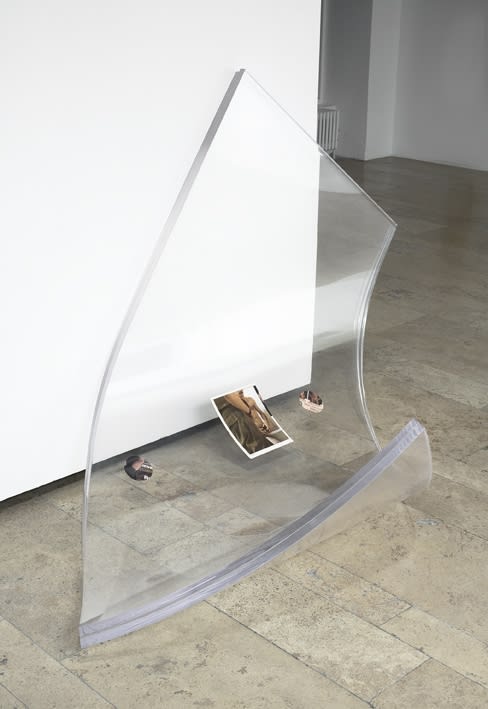Kelley Walker
Gisela Capitain and Friedrich Petzel are delighted to announce the first solo exhibition by Kelley Walker at Capitain Petzel and the first solo exhibition by the artist in Germany.
The Loft, New York City
The Loft was the location for the first underground dance party (Love Saves the Day) that was created by David Mancuso on February 14, 1970 in New York. Mancusoʼs vision of a private party, similar to and inspired by rent parties and house parties, The Loft was non-commercial, with no licence and no alcohol, food, or beverages were sold, Unlike conventional nightclubs or discotheques, attendance was by invitation only.
When Mancuso threw his first informal house parties, the gay community was often harassed in the bars and dance clubs. At The Loft and many other early, private discotheques they could dance together without fear of police action, thanks to Mancuso‘s legal, yet underground business model. The initial Loft was Mancuso‘s own home at 647 Broadway. The collapse of a neighboring hotel forced a move to 99 Prince Street in Soho in 1975. Vociferous community opposition ensued, and the party lay dormant for a year during the New York City Department of Consumer Affairs‘ longest administrative trial to date, based on their insistence that Mancuso required a „cabaret license“. The department decreed in 1975 that he was free to host his parties as long as there were no sales of food or beverages. This decision set a new precedent that benefited the Paradise Garage and other private „clubs“ in the process.
The period also saw Mancuso‘s space serve as headquarters for the New York Record Pool, the very first Record Pool, which he founded with Vince Aletti and Steve D‘Acquisto. Many of the disco era‘s leading disc jockeys, including Larry Levan, Nicky Siano and Frankie Knuckles were early Loft attendees. Their venues (the Paradise Garage, The Gallery, Chicago‘s Warehouse, and the exclusively gay The Saint) were influenced by the Loft.
The CMYK Four-Colour Process
The CMYK color model, referred to as process color or four color, is a subtractive color model, used in color printing, also used to describe the printing process itself. CMYK refers to the four inks used in most color printing: cyan, magenta, yellow, and key black. Though it varies by print house, press operator, press manufacturer and press run, ink is typically applied in the order of the abbreviation. The “K” in CMYK stands for key since in four-color printing cyan, magenta, and yellow printing plates are carefully keyed or aligned with the key of the black key plate.
The CMYK model works by partially or entirely masking certain colors on the typically white background (that is, absorbing particular wavelengths of light). Such a model is called subtractive because inks “subtract” brightness from white.
In additive color models such as RGB, white is the “additive” combination of all primary colored lights, while black is the absence of light. In the CMYK model, it is just the opposite: white is the natural color of the paper or other background, while black results from a full combination of colored inks.
-
 Kelley WalkerUntitled, 2009Four-colour process silkscreen with acrylic on canvas, Rolling Stone; August 28 1975signed and dated on verso121.9 x 121.9 cm / 48 x 48 inches
Kelley WalkerUntitled, 2009Four-colour process silkscreen with acrylic on canvas, Rolling Stone; August 28 1975signed and dated on verso121.9 x 121.9 cm / 48 x 48 inches -
 Kelley Walker4870 Series, 2009Four-colour process silkscreen on canvassigned and dated on verso2 parts
Kelley Walker4870 Series, 2009Four-colour process silkscreen on canvassigned and dated on verso2 parts
each 29.2 x 21.6 cm / 11.5 x 8.5 inches -
 Kelley WalkerUntitled, 20096 elements
Kelley WalkerUntitled, 20096 elements
Site-specific installation of compressed newspaper panelseach element: 10 x 153 x 2.5 cm
Various dimensions for installation -
 Kelley WalkerUntitled, 2009Four-colour process silkscreen with acrylic on canvas, Harper´s; June 1974signed and dated on verso243.8 x 25.4 cm / 96 x 10 inches
Kelley WalkerUntitled, 2009Four-colour process silkscreen with acrylic on canvas, Harper´s; June 1974signed and dated on verso243.8 x 25.4 cm / 96 x 10 inches -
 Kelley WalkerUntitled, 2009Four-colour process silkscreen with acrylic on canvas, Vogue; February 1970signed and dated on verso243.8 x 88.9 cm / 96 x 35 inches
Kelley WalkerUntitled, 2009Four-colour process silkscreen with acrylic on canvas, Vogue; February 1970signed and dated on verso243.8 x 88.9 cm / 96 x 35 inches -
 Kelley WalkerUntitled, 2009Four-colour process silkscreen with acrylic on canvas, Playboy; December 1975signed and dated on verso243.8 x 182.9 cm / 96 x 72 inches
Kelley WalkerUntitled, 2009Four-colour process silkscreen with acrylic on canvas, Playboy; December 1975signed and dated on verso243.8 x 182.9 cm / 96 x 72 inches -
 Kelley WalkerUntitled, 2009Four-colour process silkscreen with acrylic on canvas, Issueone; Fall 2009signed and dated on verso243.8 x 25.4 cm / 96 x 10 inches
Kelley WalkerUntitled, 2009Four-colour process silkscreen with acrylic on canvas, Issueone; Fall 2009signed and dated on verso243.8 x 25.4 cm / 96 x 10 inches -
 Kelley WalkerUntitled, 2009Four-colour process silkscreen with acrylic on canvas, Esquire; December 1970signed and dated on verso243.8 x 182.9 cm / 96 x 72 inches
Kelley WalkerUntitled, 2009Four-colour process silkscreen with acrylic on canvas, Esquire; December 1970signed and dated on verso243.8 x 182.9 cm / 96 x 72 inches -
 Kelley WalkerUntitled, 2009Four-colour process silkscreen with acrylic on canvas, The New Yorker; June 25, 2007signed and dated on verso243.8 x 10.2 cm / 96 x 4 inches
Kelley WalkerUntitled, 2009Four-colour process silkscreen with acrylic on canvas, The New Yorker; June 25, 2007signed and dated on verso243.8 x 10.2 cm / 96 x 4 inches -
 Kelley WalkerUntitled, 2009Four-colour process silkscreen with acrylic on canvas, Stern; 22 November 1973signed and dated on verso243.8 x 58.4 cm / 96 x 23 inches
Kelley WalkerUntitled, 2009Four-colour process silkscreen with acrylic on canvas, Stern; 22 November 1973signed and dated on verso243.8 x 58.4 cm / 96 x 23 inches -
 Kelley WalkerPioneer PL-518 Series, 2009Four-colour process silkscreen with acrylic ink on MDFsigned and dated on versoComposed of a set of 10 panels:
Kelley WalkerPioneer PL-518 Series, 2009Four-colour process silkscreen with acrylic ink on MDFsigned and dated on versoComposed of a set of 10 panels:
each 57.8 x 83.8 x 6 cm / 22.75 x 33.25 1.25 inches
overall: dimensions variable1, Edition 1/2 -
 Kelley WalkerWave, 2009Plexiglass and magazine pages
Kelley WalkerWave, 2009Plexiglass and magazine pages
plus single mdf panel2 parts, each: 213.4 x 144.8 x 2.5 cm / 84 x 57 x 1 inches
59 x 152 x 248 cm / 23.22 x 59.84 x 97.63 inches -
 Kelley WalkerUrinal, 2009Plexiglass and magazine pages2 parts, each: 320 x 106.7 x 2.5 cm / 126 x 42 x 1 inches
Kelley WalkerUrinal, 2009Plexiglass and magazine pages2 parts, each: 320 x 106.7 x 2.5 cm / 126 x 42 x 1 inches
131 x 140 x 212 cm / 51.57 x 55.11 x 83.46 inches -
 Kelley WalkerUntitled, 2009Four-colour process silkscreen with acrylic on canvas, Life; April 14, 1970signed and dated on verso243.8 x 25.4 cm / 96 x 10 inches
Kelley WalkerUntitled, 2009Four-colour process silkscreen with acrylic on canvas, Life; April 14, 1970signed and dated on verso243.8 x 25.4 cm / 96 x 10 inches -
 Kelley WalkerUntitled, 2009Four-colour process silkscreen with acrylic on canvas, Deutsch Vogue; Oktober 2009signed and dated on verso243.8 x 365.8 cm / 96 x 144 inches
Kelley WalkerUntitled, 2009Four-colour process silkscreen with acrylic on canvas, Deutsch Vogue; Oktober 2009signed and dated on verso243.8 x 365.8 cm / 96 x 144 inches -
 Kelley WalkerUntitled, 2009Four-colour process silkscreen with acrylic on canvas, Atlantic; September 1974signed and dated on verso243.8 x 10.2 cm / 96 x 4 inches
Kelley WalkerUntitled, 2009Four-colour process silkscreen with acrylic on canvas, Atlantic; September 1974signed and dated on verso243.8 x 10.2 cm / 96 x 4 inches -
 Kelley WalkerUntitled, 2009Four-colour process silkscreen with acrylic on canvas, Newsweek; December 2, 1974signed and dated on verso243.8 x 25.4 cm / 96 x 10 inches
Kelley WalkerUntitled, 2009Four-colour process silkscreen with acrylic on canvas, Newsweek; December 2, 1974signed and dated on verso243.8 x 25.4 cm / 96 x 10 inches -
 Kelley WalkerUntitled, 2009Vinyl record, 45" record cover mounted on paper and framed77.5 x 52.1 x 3.8 cm / 30.5 x 20.5 x 1.5 inches
Kelley WalkerUntitled, 2009Vinyl record, 45" record cover mounted on paper and framed77.5 x 52.1 x 3.8 cm / 30.5 x 20.5 x 1.5 inches -
 Kelley WalkerUntitled, 2009Four-colour process silkscreen with acrylic on canvas, Interview; November 1979signed and dated on verso243.8 x 15.2 cm / 96 x 6 inches
Kelley WalkerUntitled, 2009Four-colour process silkscreen with acrylic on canvas, Interview; November 1979signed and dated on verso243.8 x 15.2 cm / 96 x 6 inches
